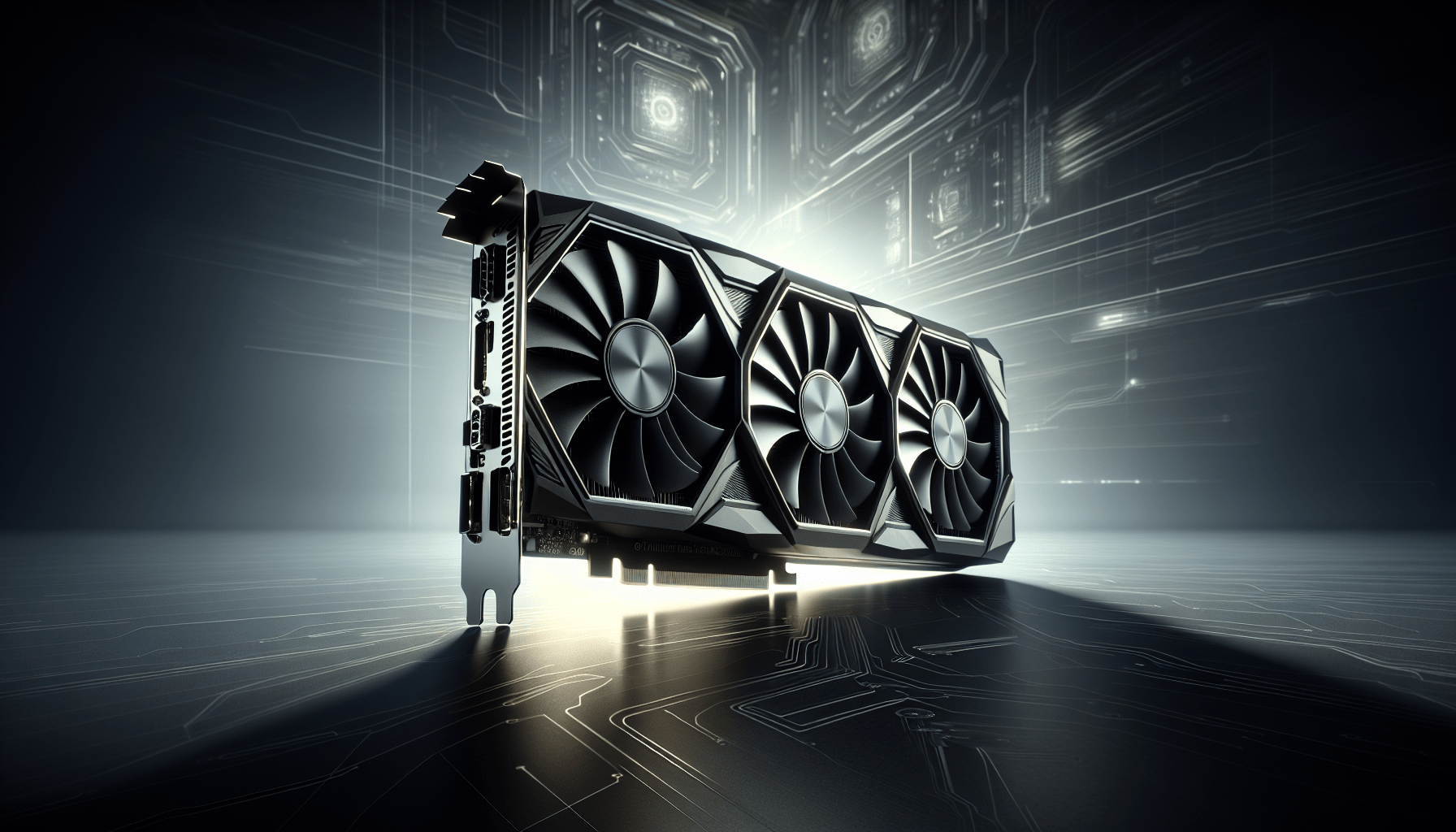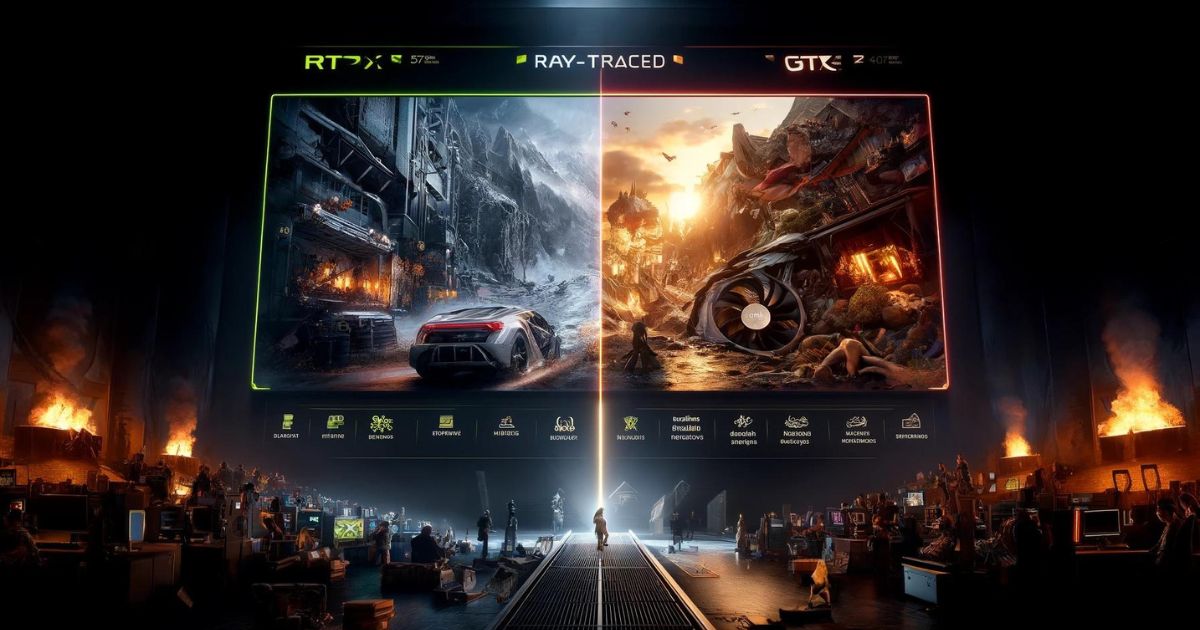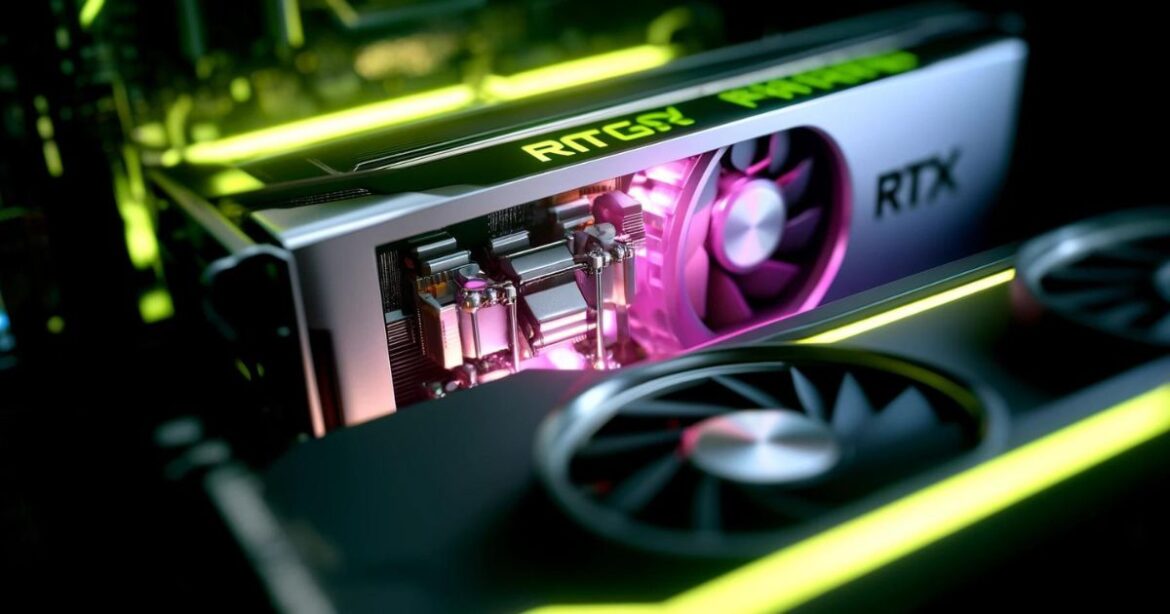Ever found yourself puzzled by the price difference between RTX and GTX graphics cards? Chances are, you’re not alone. RTX models come with a heftier price tag due to their advanced real-time ray tracing technology, which delivers unprecedented lighting and shadow effects in games, pushing visual quality to new heights. Moreover, these cards pack in AI-based features like DLSS, enhancing performance and efficiency. Simply put, you’re paying more for cutting-edge tech and a superior gaming experience, which isn’t something GTX cards can fully offer.
Have you ever wondered why RTX graphics cards come with a heavier price tag compared to GTX cards? You might be curious about what’s inside these GPUs that make them more expensive. Is it just a marketing ploy, or do they offer something extra for the higher cost?
Let’s take a closer look at why RTX is more expensive than GTX, delving into the technology, capabilities, and features behind these powerful components.
What Are GTX and RTX?
You might already be somewhat familiar with GTX and RTX graphics cards, but let’s break down what they are and the primary differences between the two.
GTX: The Gaming Standard
GTX stands for “Giga Texel Shader eXtreme,” a family of GPUs initially known for setting new standards in gaming performance. These cards are built on Nvidia’s Pascal architecture and earlier ones. Known for their reliability and solid performance, GTX cards have been in the hands of gamers for many years and continue to be favoured for mid-range to high-end gaming systems.
RTX: The Next Generation
RTX, on the other hand, stands for “Ray Tracing Texel eXtreme.” It represents Nvidia’s shift to a new architecture called Turing, which introduces real-time ray tracing capabilities among other advanced features. Launched in 2018, the RTX series has quickly become synonymous with high-end, next-gen gaming experience.
Technological Advantages of RTX
When it comes to cutting-edge technology, RTX takes the lead, but this comes at a price. Let’s explore what makes RTX cards more expensive.
Ray Tracing
The most significant selling point of RTX cards is their ray-tracing capabilities. Ray tracing is a rendering technique that produces incredibly realistic lighting, shadows, and reflections by simulating the way light travels and interacts with objects in a scene.
Unlike traditional rasterization techniques used in GTX cards, ray tracing allows for more immersive and lifelike graphics, providing you with a better gaming experience.
Tensor Cores and AI Super Sampling (DLSS)
Another innovative feature that RTX cards offer is the inclusion of Tensor Cores, which are specialized cores designed to accelerate AI computing tasks. A notable application of these cores is DLSS (Deep Learning Super Sampling), which uses AI to render images at lower resolutions and then upscale them to higher resolutions.
This means games can run smoother without compromising on image quality, giving you an edge, especially in performance-intensive scenarios.
Performance Boost and Future-Proofing
With higher processing capabilities, advanced memory types, and better power efficiency, RTX cards significantly outperform their GTX counterparts. This enables better performance in current and upcoming games and applications, providing you with a future-proof solution.

Components Influencing Cost
The construction and components used in RTX graphics cards are more advanced, contributing to the higher price tag. Below are some of the key aspects that affect their cost.
Advanced Manufacturing Process
RTX GPUs utilize more advanced manufacturing processes compared to GTX cards. While GTX cards may still be built on 14nm or 16nm processes, RTX cards are built using a more cutting-edge 12nm or even 7nm process. This results in smaller, more efficient, and faster chips, but also raises production costs.
More Transistors and Larger Die Size
RTX cards often have significantly more transistors and larger die sizes compared to GTX cards. These additional transistors improve performance but make the manufacturing process more complicated and expensive.
| Type | GTX | RTX |
|---|---|---|
| Transistors | Fewer | More |
| Die Size | Smaller | Larger |
Specialized Cooling Solutions
To maintain optimal performance and prevent overheating, RTX cards often come with more advanced cooling solutions. This includes multiple fans, vapour chambers, and even liquid cooling in some high-end models. These cooling solutions are not just fancy extras; they are essential for the stable operation of these powerful GPUs, but they also add to the overall cost.
Related:
Which Is Better GTX 1660 Ti Or RTX 2060?
Higher-Quality Materials
The materials used in RTX cards are typically of higher quality. This includes better capacitors, power connectors, and improved PCB designs. While these don’t directly affect gaming performance, they contribute to the card’s durability and longevity.
Market Dynamics and Brand Positioning
 Beyond the technology and components, market forces significantly influence the price of RTX cards compared to GTX models.
Beyond the technology and components, market forces significantly influence the price of RTX cards compared to GTX models.
Supply and Demand
The demand for cutting-edge technology is usually higher, and the supply often struggles to keep up, especially shortly after new technologies are introduced. This high demand versus limited supply mainly contributes to the higher prices seen for RTX cards.
Branding and Market Positioning
Nvidia positions RTX as their premium line of graphics cards. Given their advanced capabilities, they are marketed towards gamers who desire the best experience possible. Branding plays a significant role in the perceived value of these products, and Nvidia has positioned RTX as the top choice for serious gamers.
Pricing Strategy
Nvidia adopts a tiered pricing strategy to differentiate between various segments in the market. By pricing RTX cards higher, they can better target the high-end market while continuing to serve mid-range and budget-conscious consumers with their GTX line.
Real-World Performance Differences
So, how do these price differences translate into real-world use? Let’s discuss some practical scenarios:
Gaming Experience
For most current games, both on GTX and RTX cards, the experience will be generally positive. However, RTX cards will enable higher frame rates, better resolutions, and superior detail levels, particularly in modern titles that support ray tracing and DLSS. For example:
RTX vs GTX in Popular Games
| Game | GTX 1660 Ti | RTX 3060 |
|---|---|---|
| Cyberpunk 2077 (1080p Ultra) | ~48 FPS | ~65 FPS |
| Control (1080p High with Ray Tracing) | Not Available | ~75 FPS |
| Fortnite (1080p Ultra) | ~72 FPS | ~120 FPS |
Content Creation and Professional Use
If you’re into video editing, 3D rendering, or other resource-intensive tasks, RTX cards offer a clear advantage. The improved processing power, faster rendering times, and additional features like CUDA Cores, Tensor Cores, and Ray Tracing capabilities make RTX cards more suitable for professional applications.
Future-Proofing
RTX cards are better equipped to handle future game releases and software updates. Technologies like ray tracing and DLSS are becoming more common, and having an RTX card ensures that you’ll be able to take full advantage of these advancements for years to come.
Which One Should You Choose?
Given the significant price difference, you might be wondering whether you should go for an RTX or stick with a GTX card. Here are some things to consider:
Your Budget
If your budget is tight, GTX cards provide excellent value for money and are capable of delivering a satisfying gaming experience. However, if you have some financial flexibility and want the best performance possible, investing in an RTX card could be worth the additional cost.
Your Gaming Needs
If you’re an occasional gamer who doesn’t insist on the highest graphics settings, a GTX card will do just fine. However, if you’re a hardcore gamer looking to enjoy the latest titles at their highest settings with features like ray tracing and DLSS, then an RTX card is more appropriate.
Future Considerations
It’s also essential to think about how long you want your investment to last. RTX cards offer more future-proofing, so if you’re planning on using the card for several years and want it to remain relevant for new technologies, opting for an RTX card is a better choice.
So there you have it! Now you know why RTX cards are more expensive than GTX cards. It’s all about advanced technologies, improved performance, higher manufacturing costs, and market positioning. While GTX cards provide ample power for many gaming scenarios and professional tasks, RTX cards offer a leap forward in technology that justifies their higher price point.
Choosing between GTX and RTX ultimately comes down to your budget, performance requirements, and future needs. Whether you go for GTX or RTX, both lines offer excellent options that can take your gaming or professional work to the next level.
